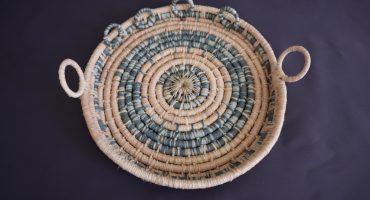Basket Weaving: A Craft Rooted in Tradition and Sustainability
Basket Weaving: A Craft Rooted in Tradition and Sustainability
Basket Weaving: A Craft Rooted in Tradition and Sustainability
Basket weaving is one of the oldest crafts known to humankind, with its origins dating back thousands of years. This ancient art form has been practiced by countless cultures around the world, each developing its own distinct techniques, patterns, and materials. Today, handwoven baskets are still highly valued, not just for their functionality but for their aesthetic appeal and cultural significance.
Historical Significance
Traditionally, baskets were used for carrying goods, storing food, and even in ceremonial contexts. The materials used for basket weaving, such as reeds, grasses, bamboo, and palm leaves, were often locally sourced, making basketry one of the most sustainable crafts. Each basket was unique, reflecting the natural materials and the skill of the artisan who made it.
Basket weaving was integral to daily life, with various styles and techniques emerging in different regions. For instance, in Africa, intricate patterns and vibrant colors characterize many traditional baskets, while Native American tribes developed coiled basketry techniques that remain highly regarded. Each culture’s approach to basket weaving tells a story of their environment, needs, and artistic expression.

Modern Appeal
In modern times, handmade baskets are appreciated for their craftsmanship and versatility. They are not just practical objects but also serve as beautiful home decor items. Whether used for storage, as planters, or simply as a decorative piece, baskets add a natural, rustic charm to any space. Their organic textures and shapes complement a wide range of interior design styles, from minimalist to bohemian.
Basket weaving has also evolved to incorporate contemporary designs, blending traditional methods with modern aesthetics. Artisans now experiment with new materials like recycled paper and plastic, creating innovative and eco-friendly designs. This fusion of old and new techniques ensures that basket weaving remains relevant and appealing to today’s consumers.
Sustainable and Supportive
Moreover, in an age where sustainability is increasingly important, handwoven baskets are a conscious choice. They are made from renewable materials and are often produced by small, local communities that rely on traditional crafts for their livelihoods. By choosing handmade baskets, you support these artisans and contribute to the preservation of a craft that has been passed down through generations.
Supporting basket weavers also promotes economic sustainability within these communities. Many artisans work within cooperatives that provide fair wages, education, and healthcare benefits to their members. Purchasing handmade baskets directly impacts these communities, fostering a sense of pride and financial stability.
Conclusion
Basket weaving is more than just a craft; it is a tradition that embodies sustainability and cultural heritage. By incorporating these beautiful, handwoven items into your home, you not only enhance your decor but also support a sustainable and meaningful tradition. Each basket is a testament to the artisan’s skill and a celebration of their cultural legacy.
As you explore the world of basket weaving, you’ll discover the rich history and innovative future of this timeless craft. Embrace the beauty and sustainability of handwoven baskets, and let them bring warmth and character into your living spaces.






